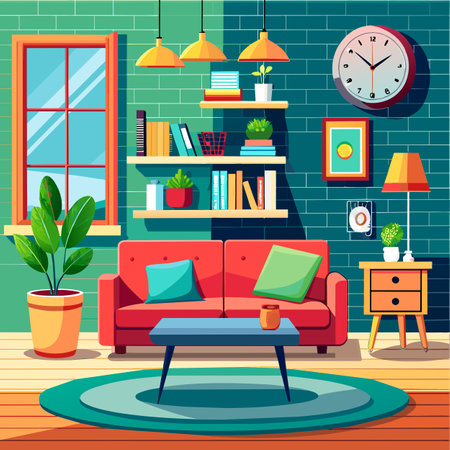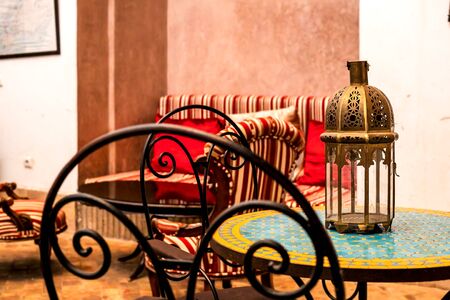Celebrating Indian Craftsmanship in Modern Interiors
India’s interior design startups are discovering a rich canvas in their own backyard: traditional crafts that have shaped the nation’s cultural identity for centuries. Integrating heritage elements such as handloom textiles, terracotta art, and intricate woodwork into contemporary spaces is not just a trend—it’s a celebration of India’s artisanal legacy. Imagine a living room where handwoven ikat cushions rest on modern sofas, or a dining area adorned with earthy terracotta lamps crafted by rural potters. These thoughtful touches bring authenticity, warmth, and a sense of history to urban homes, while supporting local artisans. Startups passionate about design can create interiors that are uniquely Indian yet globally appealing, ensuring that every space tells a story of craftsmanship and cultural pride. By blending the old with the new, interior designers are fostering appreciation for indigenous skills and empowering traditional communities to thrive in today’s fast-evolving market.
Colour Palettes Inspired by Indian Culture
When it comes to incorporating Indian heritage and traditional styles in interior design startups, one cannot overlook the significance of colour. The vibrancy and depth found in Indian hues are a powerful way to evoke a sense of cultural rootedness while creating inviting spaces. Indian interiors often celebrate a spectrum of colours—ranging from the earthy warmth of terracottas and indigos to the bold energy of saffrons and peacock blues. Each shade tells its own story, reflecting the rich tapestry of India’s diverse regions and traditions.
The Influence of Vibrant Indian Hues
Indian culture is synonymous with colour—think of Rajasthan’s painted havelis, South India’s temple frescos, or the riotous blooms during Holi. These palettes are not just for show; they carry deep meanings. Earthy tones like terracotta connect us to rural landscapes and ancient crafts, while indigo echoes the legacy of natural dyeing traditions. Saffron, both sacred and celebratory, instantly uplifts a space. Thoughtful use of these hues can anchor an interior scheme in authenticity, offering both energy and comfort to users.
Practical Application in Design Startups
For startups aiming to weave Indian aesthetics into modern interiors, balancing vibrancy with subtlety is key. Consider using bold shades as accent walls, upholstery, or accessories while maintaining neutral backdrops to avoid visual overwhelm. The following table demonstrates how different Indian-inspired colours can be integrated thoughtfully:
| Colour | Cultural Significance | Suggested Use in Interiors |
|---|---|---|
| Terracotta | Earthiness, tradition | Flooring tiles, planters, feature walls |
| Indigo | Artisan crafts, calmness | Bedding, drapes, wall accents |
| Saffron | Piety, celebration | Cushions, lampshades, statement chairs |
| Peacock Blue | Royalty, festivity | Rugs, artwork frames, kitchen tiles |
Narrating Cultural Stories through Colour Choices
A considered palette does more than just beautify—it narrates stories. When clients walk into a space that feels unmistakably Indian yet contemporary, they experience a sense of belonging and nostalgia. For interior design startups, this approach not only distinguishes your brand but also creates meaningful connections with local audiences who appreciate these nods to their heritage.

3. Reviving Heritage Motifs and Patterns
India’s design legacy is a treasure trove of intricate motifs and patterns, each with centuries-old stories woven into their threads. For new-age interior design startups, tapping into this rich vocabulary means more than mere replication—it’s about reimagining these elements for the contemporary Indian home while honouring their origins.
Paisleys: A Symbol of Timelessness
The classic paisley, or ‘mango’ motif, is instantly recognisable across the subcontinent. Traditionally found in Kashmiri shawls and South Indian textiles, its fluid curves represent fertility and abundance. Startups can reinterpret paisleys on statement walls, soft furnishings, or even minimalistic wallpapers—transforming heritage into a chic yet soulful accent that resonates with today’s urban sensibilities.
Jaali Work: Light, Shadow, and Geometry
Jaali (perforated lattice) patterns are a testament to India’s architectural prowess. Historically used in Mughal palaces and Rajasthani havelis, jaali screens provided both privacy and ventilation. Modern interior designers are bringing jaali back as laser-cut wooden panels, room dividers, or metal grilles—infusing spaces with playfully patterned light while keeping the spirit of traditional craftsmanship alive.
Madhubani Art: Storytelling on Walls
Originating from Bihar, Madhubani art is celebrated for its vibrant colours and mythological narratives. Instead of relegating these paintings to framed artworks, startups are integrating Madhubani-inspired murals directly onto accent walls, furniture pieces, and decor accessories. This approach not only preserves indigenous artistry but also connects urban dwellers with folk traditions through daily interaction.
Reinterpretation with Respect
The key for startups lies in balancing authenticity with innovation. By collaborating with artisans or drawing inspiration from local histories, designers can ensure that every motif—whether it’s hand-painted on tiles or digitally printed on upholstery—carries forward its origin story. In doing so, they foster a design dialogue where heritage is not just displayed but experienced afresh in modern Indian living spaces.
Sustainable Sourcing and Local Artisans
When it comes to incorporating Indian heritage and traditional styles in interior design startups, one of the most impactful approaches is collaborating with local artisans. India’s rich tapestry of crafts—from intricate handloom weaving to timeless pottery and artisanal metalwork—offers both a visual language and an ethical foundation for design entrepreneurs. By working hand-in-hand with local weavers, potters, and metalworkers, startups don’t just elevate their projects aesthetically; they also champion sustainable sourcing and empower India’s vibrant artisan communities.
The Value of Collaboration
Integrating local craftsmanship creates meaningful narratives in every space. Each piece tells the story of its maker, infusing interiors with authenticity and cultural depth. When startups source materials directly from artisans, it reduces carbon footprints typically associated with mass production and long-distance shipping, aligning perfectly with today’s eco-conscious sensibilities.
Supporting the Indian Economy & Sustainable Design
Choosing indigenous crafts isn’t just about aesthetics—it’s a commitment to sustaining livelihoods and preserving centuries-old traditions. The following table highlights how different types of collaborations benefit both design startups and local communities:
| Artisan Sector | Traditional Craft | Design Benefit | Community Impact |
|---|---|---|---|
| Weaving | Kanchipuram silk, Chanderi cotton, Ikat | Unique textiles for furnishings & wall art | Boosts demand for handlooms, supports rural families |
| Pottery | Terracotta, Blue Pottery (Jaipur), Black Pottery (Manipur) | Bespoke planters, lighting fixtures, décor objects | Preserves ancient firing techniques, empowers women artisans |
| Metalwork | Dhokra, Bidriware, Brass Inlay Work | Sculptural accents, hardware, statement pieces | Revitalises fading crafts, sustains artisan clusters |
Cultural Integrity Meets Modern Demand
Tapping into these rich veins of craft not only honors Indian heritage but also differentiates new brands in a crowded market. Clients increasingly seek out bespoke solutions that have a story to tell—embracing local artistry provides just that. By fostering direct relationships with artisans and choosing sustainable sourcing practices, interior design startups can create spaces that are as ethical as they are enchanting—rooted in tradition yet ready for tomorrow.
5. Blending Heritage with Modern Functionality
For Indian interior design startups, the real magic happens when traditional aesthetics are seamlessly woven into the fabric of contemporary living. This fusion is not just about nostalgia; its about honouring our roots while responding to today’s dynamic lifestyles.
Design with Purpose: Marrying Old and New
Startups should begin by selecting key heritage elements—think carved wooden jaali panels, ornate brass fittings, or handwoven textiles—and pairing them with minimalist, modern layouts. For example, a sleek modular kitchen can be elevated by adding vibrant Athangudi tiles as a backsplash, or a living room can gain soul with antique jharokha mirrors set against neutral walls.
Smart Use of Space
Urban Indian homes are getting more compact, so functionality is non-negotiable. Incorporate traditional storage solutions like wooden chests (sandooks) that double up as coffee tables or seating. Multi-functional furniture pieces inspired by traditional designs—like diwans with hidden storage or foldable charpais—help maximize utility without losing cultural charm.
Technology Meets Tradition
Embrace smart home technology without compromising heritage aesthetics. Conceal modern lighting systems behind hand-carved cornices or integrate wireless charging ports within classic wooden desks. This ensures spaces feel current and convenient while still reflecting Indian artistry.
Colour & Material Harmony
Balance earthy tones and natural materials such as teak, cane, and terracotta with contemporary finishes like glass or stainless steel. Layering textures—placing a handloom dhurrie on polished concrete floors or hanging block-printed curtains in rooms with large windows—creates depth and interest.
Cultural Storytelling Through Details
Encourage clients to display family heirlooms, vintage photographs, or local crafts as focal points. This personal touch not only reinforces the sense of belonging but also transforms functional spaces into living narratives of India’s rich heritage.
The goal for startups is to create interiors where every detail—whether rooted in tradition or innovation—serves both beauty and purpose. When executed thoughtfully, these blended spaces become timeless sanctuaries tailored for the Indian way of life.
6. Storytelling through Interiors: Indian Narratives in Design
Designing interiors in India goes beyond mere aesthetics; it is about weaving the tapestry of India’s diverse regions, cultures, and histories into the very fabric of a living space. For startups looking to incorporate Indian heritage and traditional styles, storytelling through design becomes a powerful tool to create homes that are not just beautiful but deeply meaningful.
The Power of Regional Elements
Every region in India has its own unique design language—be it the intricate woodwork of Kashmir, the earthy terracotta tiles of Kerala, or the vibrant mirror work from Gujarat. By selecting artefacts, materials, and motifs specific to a client’s roots or preferences, interior designers can craft spaces that narrate personal stories and pay homage to ancestral traditions.
Cultural Fusion for Modern Lifestyles
Today’s Indian homeowners aspire for global comfort while staying rooted in their identity. Startups can bridge this gap by mixing contemporary layouts with traditional crafts. Imagine a sleek modular kitchen enhanced with Jaipuri blue pottery tiles or a modern living room anchored by a hand-knotted Dhurrie rug. Such thoughtful juxtapositions allow clients to celebrate their heritage without compromising on functionality.
Personal Heritage Statements
Customisation is key when making every home a personal heritage statement. Bespoke murals illustrating family histories, gallery walls showcasing travel souvenirs from different Indian states, or even furniture upholstered with block-printed textiles become conversation starters that reflect the inhabitants’ journeys across India’s vast cultural landscape.
Celebrating Festivals & Rituals through Design
Indian festivals and rituals offer another rich layer for narrative-driven interiors. Dedicated pooja corners with hand-carved mandirs, alcoves for diyas during Diwali, or seasonal changes in upholstery colours inspired by Holi and Onam infuse homes with a sense of celebration and continuity. Such details invite families to create new memories while honouring age-old traditions.
Ultimately, storytelling through interiors enables startups to transform ordinary houses into soulful sanctuaries—spaces where India’s glorious past, present innovations, and future aspirations coexist harmoniously under one roof.

